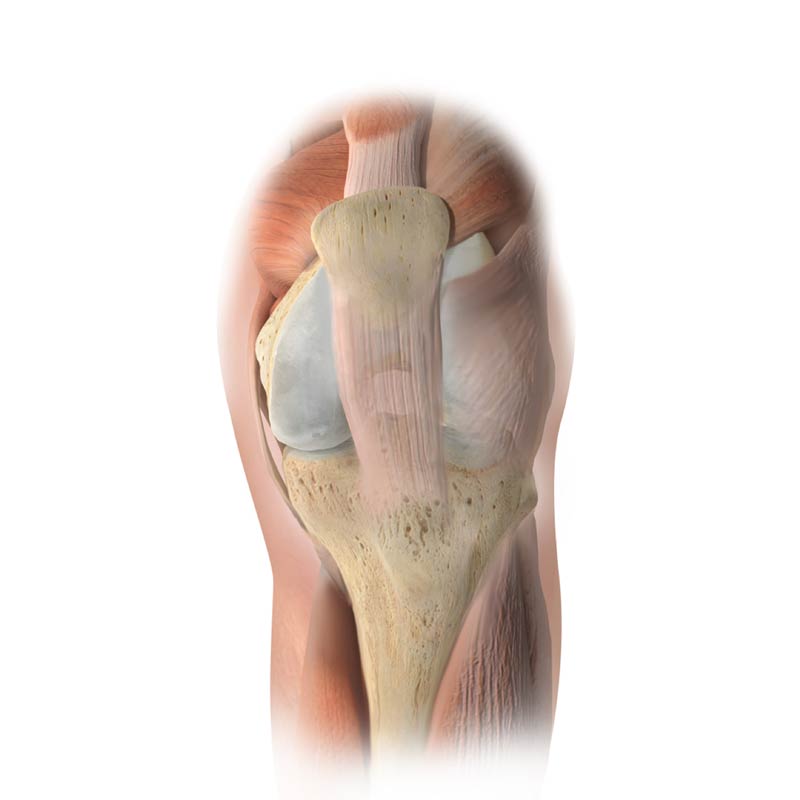Knee Arthritis
Knee osteoarthritis is very common, and around 1 in 5 people in the UK who are over the age of 45, have knee arthritis. It can be a painful and debilitating condition, affecting our day-to-day life, sleep and even work.
Knee Arthritis
What happens to the knee when arthritis develops?
The knee joint is formed by three bones coming together: the thigh bone (aka ‘femur’), one of the main shin bones (aka ‘tibia’), and the kneecap (aka ’patella’). Where the ends of the bones form the joint, they are covered with hard, shiny, articular cartilage, which enables them to move smoothly upon each other. Separating the end of the femur and the top of the tibia are two ‘c’- shaped shock absorbers, known as the menisci.
If the articular cartilage becomes damaged and worn, the bone beneath the joint surface becomes exposed, and this is known as osteoarthritis.

What causes knee arthritis?
There are multiple factors which can lead to a knee becoming arthritic. In some people, there is a genetic predisposition to having poor quality articular cartilage, and sometimes, the joint didn’t develop into an ideal shape (known as dysplasia); this can lead to increased wear.
Being overweight also loads the knee joint excessively, and trauma to the joint (such as previous breaks in the bones, dislocation, or damage to the soft tissues of the knee) can start the wear-and-tear clock ticking.
Some patients may have a form of inflammatory arthritis (e.g. Rheumatoid Arthritis) which can eventually lead to knee osteoarthritis. Finally, years of toil on the knee through impact sports such as football and rugby, can lead to articular cartilage damage.
What does knee osteoarthritis feel like?
When the articular cartilage in the knee wears, the joint surfaces no longer move freely on each other. This means the knee can be stiff, you might experience its range of movement diminishing, and irritation generated within the worn joint leads to pain and often swelling.
You might experience this in just one knee, but often both knees, and you even experience creaking within the knees.
Many patients describe pain with kneeling, going up and down stairs, and eventually even with walking short distances. Turning over in night may wake you, and you might find that you begin to walk with a limp or experience the sensation that your knee is going to give way.
You might also experience fluid swelling around or in the back of knee (when it’s known as a ‘Baker’s cyst’), and the pain in the knee may cause the muscles to weaken or waste.
How is knee osteoarthritis diagnosed?
When you come to clinic, I’ll ask you lots of questions about your knee, how it’s affecting you, your past medical history, and your lifestyle. I’ll go on to examine your knees, and Iikely ask you to undergo some imaging such X-ray, and sometimes additional scanning such as MRI or CT. Bringing this all together enables me to make a diagnosis of knee osteoarthritis.

What treatment is there for knee arthritis?
Although knee osteoarthritis can’t be reversed, much can be done to improve symptoms and keep people active.
Medications such as non-steroidal anti-inflammatory drugs (NSAIDS) can help reduce pain, swelling and stiffness. Physiotherapy exercises to strengthen the muscles supporting the knee have been shown to significantly improve pain and function, and if you’re overweight, losing some ‘timber’ will also help!
Injection treatments (such as steroids and hyaluronic acid) may give some short-term relief and enable you to carry out your physio exercises. As yet, there isn’t sufficiently compelling evidence to recommend experimental treatments such as ‘stem cell’ injections.
Sometimes, despite attempts to manage knee arthritis with conservative measures, the knee becomes so worn, that quality of life really suffers. If this is happening to you, it may be time to consider knee replacement surgery, so you can get back to being active and comfortable.
Opening Hours
| Monday – Thursday | 9:00 – 17:00 |
| Friday | 9:00 – 16:00 |
At all other times, please leave a message or send an email to [email protected] and a member of the team will get back to you as the earliest opportunity.


